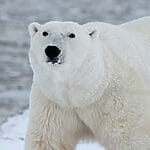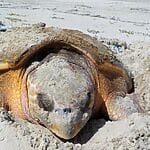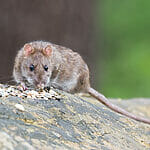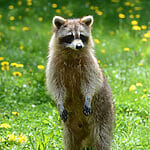The color of an animal is incredibly important to its role within the animal kingdom. Purple animals are a rarity because mammals are not able to create the certain pigment needed for purple skin.
Even insects and birds that are purple can only be that color due to structural coloration.
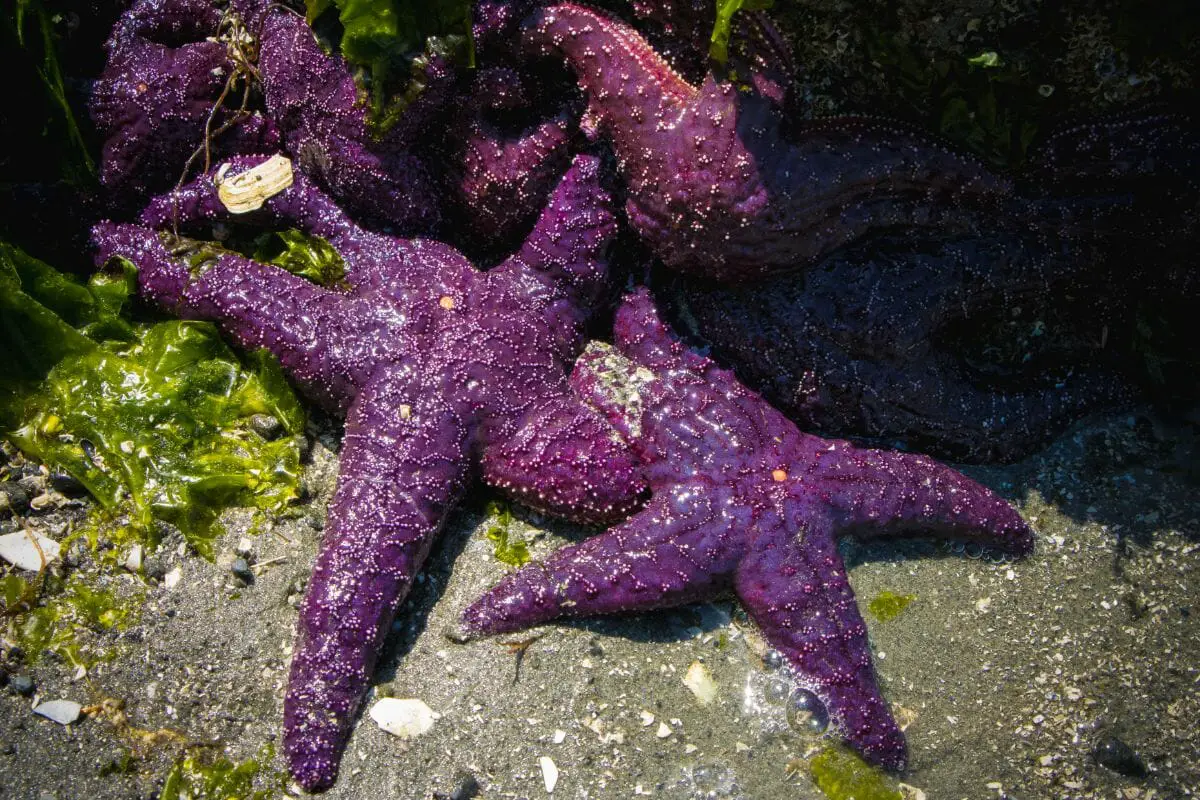
Purple animals are often that color to gain attention from things, and others are purple to ward off predators. Bright purple coloring might also be beneficial when the animal is trying to attract a mate.
Today we’re looking at 10 purple animals that exist in the wild.
1. Purple Starfish
The Purple Starfish is amazing to look at, but you often won’t be able to as it lives deep underwater. The darkness of underwater means that the purple skin of this starfish makes it easier to see from further away.
Blue hues can be seen up to 60 meters away, so purple must do a similar thing. Purple starfish utilize their purple skin to keep predators away rather than to attract a mate.
2. Violet-Crowned Woodnymph
This bird is relative to the Hummingbird species and can often be seen in subtropical or tropical places. It sits at 10.2 centimeters long on average, with a violet circle on its head.
This matches the violet spots on its back, plumage, and shoulders. You can distinguish between male and females as the female is green rather than purple.
3. Indian Purple Frog
You can find an Indian Purple Frog in Africa, in the Western Ghats. These frogs sit between six and nine inches long, and they are not poisonous. This might come as a surprise, as most brightly-colored frogs are assumed to be poisonous.
Despite this, Indian Purple Frogs are not dangerous at all. Locals have been eating them for centuries thanks to their beneficial medical properties. They’re commonly found in rainforests, living underground, and eating termites.
4. Purple Grenadier
This bird is a type of Finch that can be found predominantly in eastern Africa. Their feathers are purple from the moment they hatch, rather than the color being developed in later life.
Male Purple Grenadiers are often brighter purple to attract females better during mating season.
The vibrant purple color paired with the dull brown coloring makes these a gorgeous bird to spot.
5. Magnificent Sea Anemone
This animal is incredibly rare, but you can find Magnificent Purple Sea Anemones throughout the Indo-Pacific region. Their oral disc and tentacles are lighter colored, such as white or beige. Their column, however, is where the purple coloring shines.
Magnificent Sea Anemones are not always purple – they can be blue, pink, red, or green as well. The color that this creature is will depend on the algae that they’re surrounded by!
6. Violet-Backed Starling
This bird is covered in metallic purple feathers, making them quite a sight to see. Male Violet-Backed Starlings are brighter in pigment than females, as they use their color to attract the females during mating season.
In fact, most females are brown in color with neutral-colored feathers. As females are not brightly colored, they can stay away from predators quite easily, and much easier than the males. Violet-Backed Starlings are found in sub-Saharan Africa.
7. Longhorn Beetle
The Longhorn Beetle is often mistaken for being gray rather than purple due to the muted pigment rather than bright and bold coloring. However, they are in fact a muted purple color.
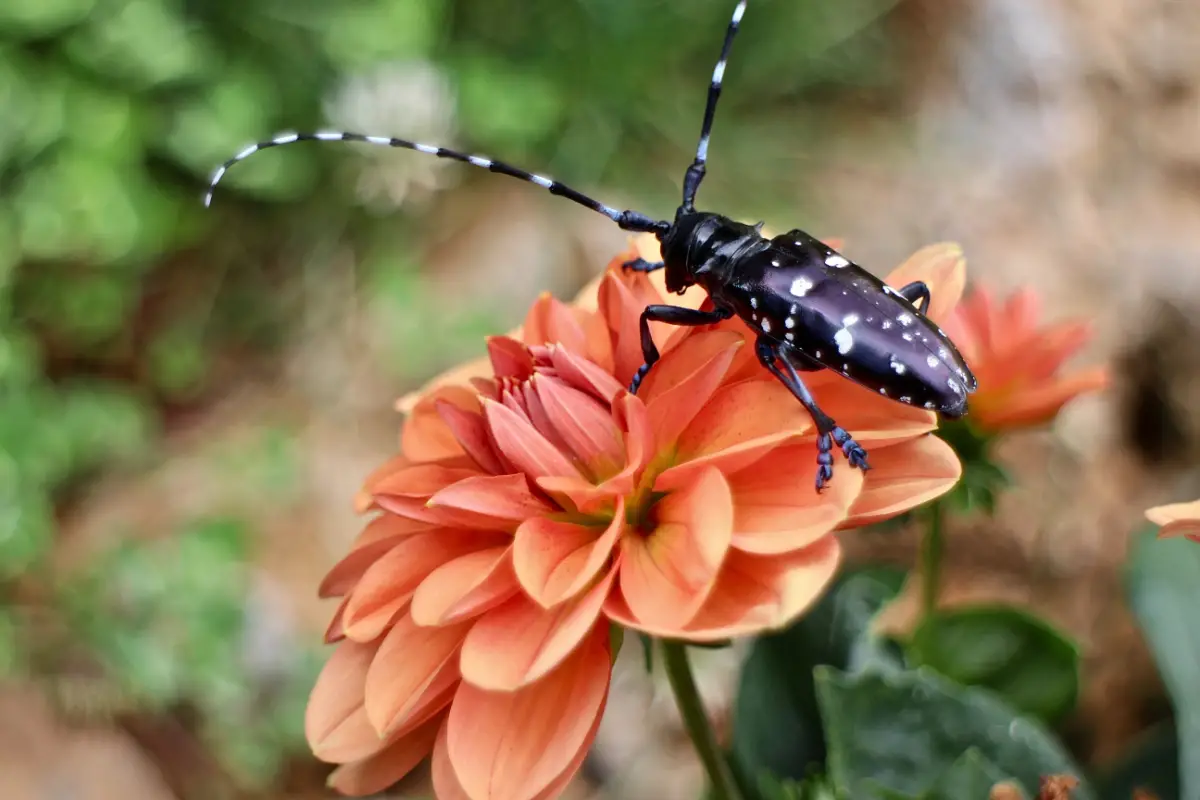
These beetles are sometimes called Longicorns, and they are invasive species that target houses.
However, they will not damage the structure of your house, nor will they bite or sting you. They just seem to be a harmless nuisance to people. Depending on their exposure to light, they might be blue rather than purple.
8. Spanish Shawl
Otherwise known as the Sea Slug, the Spanish Shawl is a purple and orange creature that stands out brightly underwater.
They can be found along the west coast of the United States, as well as in Mexico, Canada, and the Galapagos Islands.
The Spanish Shawl gets its coloring from the carotenoid pigment named astaxanthin! They are bi-colored for two reasons – the orange allows them to hide themselves while eating, and the purple coloring is to ward predators off of them.
Purple is an effective color at doing this as it is often associated with being poisonous or tasting foul.
9. Costa’s Hummingbird
Another Hummingbird on our list, the Costa’s Hummingbird is a naturally purple bird that only shows purple feathers on the males. They also have white and green feathers among the purple.
This makes it easy for them to be spotted by the females when it’s time to mate.
You can find Costa’s Hummingbird in the Sonoran and Mojave Deserts, and they’re fairly easy to spot. However, they’ll be even easier to spot if you use a sugar water feeder!
10. Glutinous Snail
The Glutinous Snail is a freshwater creature that is very delicate but equally as beautiful. The snail is almost transparent, but the shell is purple.
People living in Ancient Rome used the shells of these snails to create purple dye as purple is a difficult color to source in other natural ways.
The dye would need to be made by cracking the shell open and collecting the mucus before putting it in the sun. For just one ounce of dye, 250,000 snails would have been needed. While this sounds like a lot, the effects are incredibly long-lasting.
Summary
And that concludes our list of purple animals! Purple is an incredibly rare color when it comes to animals, as mammals cannot make the color purple for their skin.
However, some other types of animals, such as birds and fish, are able to be purple in some instances.
Most of the animals on our list are colored purple for a variety of reasons – either to attract a mate or ward off predators.
Purple is often associated with a poisonous animal in the animal kingdom, so it’s very smart of these animals to remain purple!
The collection of rare purple animals includes the majestic Purple Emperor butterfly and the iridescent Purple Firefish. These creatures thrive in diverse habitats, showcasing their striking violet hues. From the depths of the sea with the Orchid Dottyback to the terrestrial realm of the Violet Ground Beetle, their beauty captivates.
Some, like the aquatic denizens, grace aquariums, while others, such as the butterflies and beetles, enchant their natural environments. The vibrant spectrum of these unique species, each adorned in resplendent purple, adds an enchanting dimension to the diverse tapestry of wildlife, leaving admirers captivated by their vivid allure.




